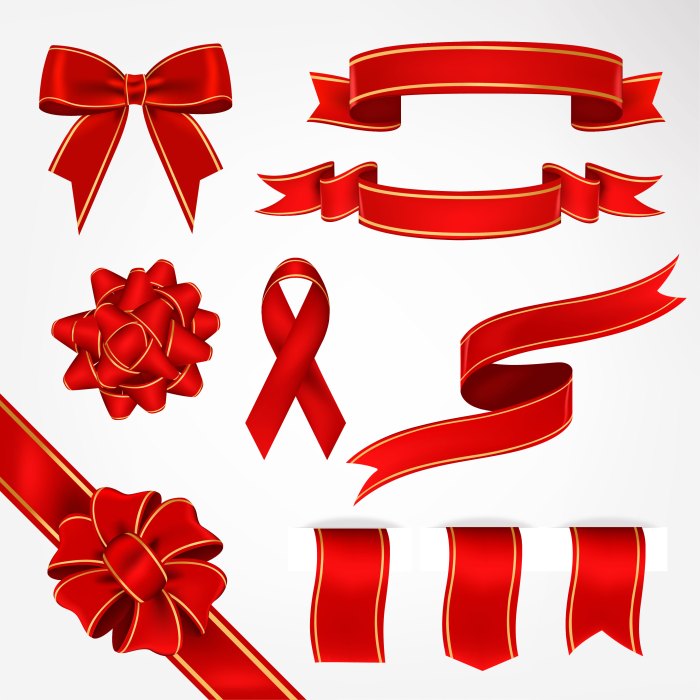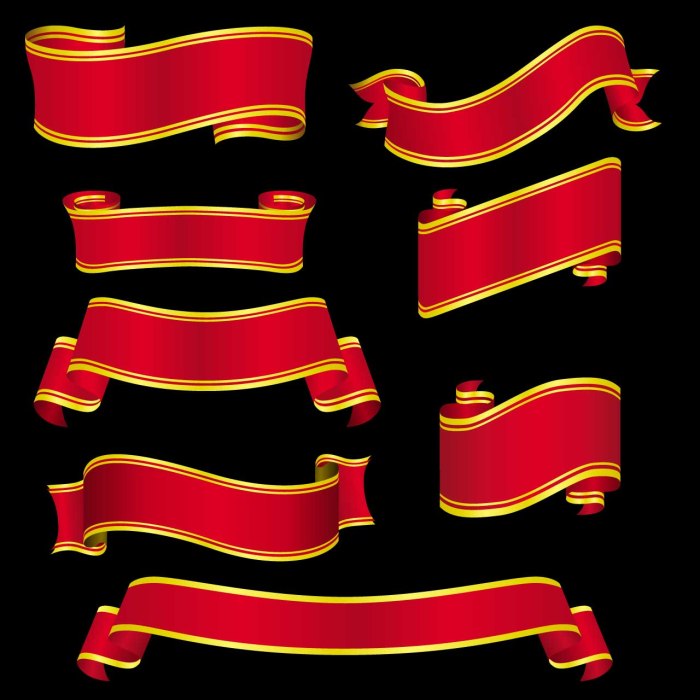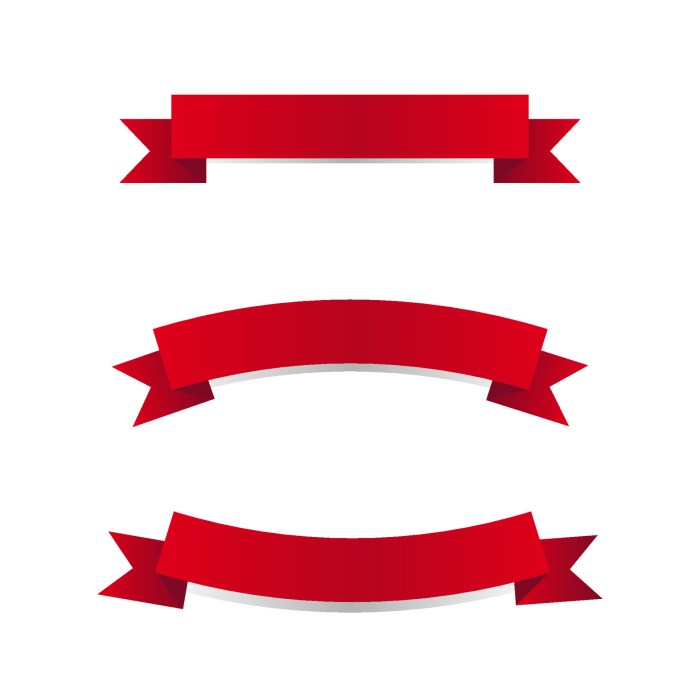Exploring the Art of Ribbon Design
Discover the fascinating world of ribbon design as we delve into its rich history, diverse types, creative techniques, and the significance of color theory. Let's unravel the beauty and versatility of ribbons in design.
From traditional uses to modern applications, ribbons have woven themselves into the fabric of design, adding a touch of elegance and charm to various projects.
History of Ribbon Design

Ribbon design has a long and rich history, dating back to ancient civilizations where ribbons were used for various purposes. Originally made from natural materials like silk, ribbons were adorned with intricate patterns and designs.
Evolution of Ribbon Design
As time progressed, ribbon design evolved with the advancement of technology and the introduction of synthetic materials. Ribbons became more accessible and versatile, leading to a wide array of colors, textures, and sizes available in the market today.
Cultural Significance of Ribbons
Ribbons hold great cultural significance in various societies around the world. They are often used in ceremonies, celebrations, and rituals to symbolize love, honor, or achievement. For example, ribbons are commonly seen in traditional weddings, where they are used to decorate gifts or as part of the bride's attire.
Traditional Uses of Ribbons in Design
- In traditional Japanese culture, obi belts are adorned with colorful ribbons to signify the wearer's social status.
- In European medieval times, ribbons were used to embellish clothing and accessories, adding a touch of elegance and sophistication.
- Native American tribes used ribbons in intricate beadwork designs to create stunning patterns on clothing and accessories.
Types of Ribbons

Ribbons come in various types and materials, each with unique characteristics that cater to different design needs.
Satin Ribbons
Satin ribbons are known for their shiny and smooth texture, making them perfect for adding a touch of elegance to designs. They are commonly used in gift wrapping, floral arrangements, and garment embellishments.
Grosgrain Ribbons
Grosgrain ribbons have a ribbed texture and are more durable compared to satin ribbons. They are often used for creating bows, hair accessories, and in crafting projects due to their sturdiness.
Organza Ribbons
Organza ribbons are sheer and lightweight, adding a delicate and ethereal touch to designs. They are popular in wedding decor, invitations, and other formal events where a subtle yet sophisticated look is desired.
Velvet Ribbons
Velvet ribbons have a luxurious and soft feel, ideal for adding a rich and opulent touch to designs. They are commonly used in jewelry packaging, home decor, and holiday decorations.
Cotton Ribbons
Cotton ribbons are natural and eco-friendly options, perfect for a more rustic or bohemian aesthetic. They are often used in DIY projects, scrapbooking, and as sustainable gift wrapping alternatives.
Comparison of Materials
Each type of ribbon offers unique characteristics, from the glossy finish of satin ribbons to the textured feel of grosgrain ribbons. The choice of material depends on the desired look and function of the design.
Applications in Design
Different types of ribbons find their place in various design applications. Satin ribbons add a touch of sophistication, while grosgrain ribbons provide durability. Organza ribbons offer a delicate finish, velvet ribbons exude luxury, and cotton ribbons bring a natural feel to designs.
Techniques for Incorporating Ribbons in Design
Ribbons are versatile design elements that can add a touch of elegance, whimsy, or sophistication to various projects. Here are some techniques for effectively incorporating ribbons in design:
Graphic Design
In graphic design, ribbons can be used to create visually appealing banners, labels, or badges. They can be integrated into logos, posters, or social media graphics to highlight key information or draw attention to important details. Ribbons can be customized with different colors, patterns, and textures to match the overall aesthetic of the design.
- Use ribbons to frame text or images, creating a focal point in the design.
- Experiment with different ribbon shapes, such as loops, bows, or spirals, to add visual interest.
- Combine ribbons with other design elements, like illustrations or typography, to enhance the overall composition.
Web Design
In web design, ribbons can be incorporated as navigation tabs, call-to-action buttons, or decorative elements. They can help guide users through the website and emphasize important links or information. Ribbons can also be animated to create dynamic and interactive user experiences.
- Use ribbons to indicate new or featured content on the website.
- Create hover effects or transitions for ribbons to enhance user engagement.
- Ensure that ribbons are responsive and optimized for different screen sizes to maintain a consistent design across devices.
Packaging Design
Ribbons play a significant role in packaging design, adding a luxurious or festive touch to products. They can be used to wrap gifts, seal packages, or enhance the overall presentation of a product. Ribbons can be customized with brand colors and logos to create a cohesive brand identity.
- Incorporate ribbons as closures for boxes, bags, or jars to create a memorable unboxing experience.
- Combine ribbons with other packaging materials, like tissue paper or stickers, to create a cohesive and visually appealing package.
- Experiment with different ribbon widths, lengths, and textures to find the perfect fit for the product and brand aesthetic.
Color Theory in Ribbon Design
Color plays a crucial role in ribbon design, as it can evoke specific emotions, convey messages, and create visual impact. The selection of colors can greatly influence the overall aesthetic and effectiveness of a design. Let's delve into the importance of color selection in ribbon design and how different colors can evoke specific emotions.
Importance of Color Selection
Color selection is vital in ribbon design as it sets the tone, conveys meaning, and attracts attention. Different colors have unique psychological associations and can evoke specific emotions. For example, warm colors like red and orange are often associated with passion and energy, while cool colors like blue and green evoke feelings of calmness and tranquility.
Emotions Evoked by Different Colors
- Red: Symbolizes passion, love, and energy. Ideal for creating a bold and vibrant look in ribbon design.
- Blue: Represents calmness, trust, and serenity. Often used to convey a sense of stability and reliability in design.
- Yellow: Signifies happiness, optimism, and warmth. Can add a cheerful and lively touch to ribbon designs.
- Green: Symbolizes growth, harmony, and nature. Perfect for creating a fresh and calming feel in design.
- Purple: Represents luxury, creativity, and royalty. Often used to add a touch of elegance and sophistication to ribbon designs.
- Black: Symbolizes power, elegance, and mystery. Adds a sense of sophistication and timelessness to ribbon design.
Successful Color Combinations in Ribbon Design
When choosing colors for ribbons, it is essential to consider color harmony and contrast. Successful color combinations in ribbon design often include complementary colors, analogous colors, or monochromatic schemes. For example, a red ribbon paired with a white background creates a classic and eye-catching combination, while a blue and green ribbon can evoke a sense of harmony and balance.
Choosing Colors Based on Design Concept
To choose colors for ribbons based on the intended design concept, consider the message or mood you want to convey. For a festive design, vibrant and contrasting colors like red and green can be suitable. On the other hand, for a more elegant and sophisticated look, a monochromatic color scheme with shades of gray or silver can be chosen.
It's essential to align the color palette with the overall theme and purpose of the design to ensure a cohesive and visually appealing result.
Closing Summary

As we conclude our exploration of ribbon design, it's evident that ribbons are more than just decorative elements—they are symbols of creativity and expression. Embrace the beauty of ribbons in your designs and let your imagination soar.
Question & Answer Hub
How has ribbon design evolved over time?
Ribbon design has transitioned from traditional embellishments to versatile elements used in various creative projects.
What are some creative ways to incorporate ribbons in graphic design?
Try using ribbons as borders, frames, or even as part of typography to add a unique flair to your designs.
Why is color selection important in ribbon design?
Colors evoke specific emotions and moods, making them crucial in creating impactful ribbon designs.




